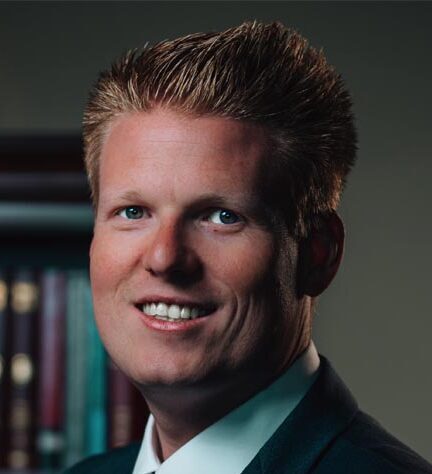A brand identifier can be a name, a logo, a slogan, etc. The Nike “swoosh” and the Starbucks’ woman are both identifiers which identify those brands. Trademarks protect brand identifiers. Trademarks ensure that no one else can use your brand identifier. This helps prevent third-party brand tarnishment, confusion, or dilution, which is where a consumer will purchase a knock off product because the brand has been substantially copied, and then blame the brand if the product is in any way deficient. It also helps prevent unlawful commercial appropriation of brands, where a knockoff dealer will benefit substantially by labeling their generic purse as a “Coach” purse, or a cheap fake watch as a “Rolex”.
There are three different types of trademarks: there are federal trademarks, registered with the United States Patent and Trademark Office, there are state trademarks, usually registered with the Secretary of State’s office for each state, and finally there are sometimes common law trademark rights which have been judicially enforced and interpreted by each state’s judiciary and court system over time.
Trademarks have varying levels of protection, depending upon how unique or different the name is from both its competitors and from everyday use. There are primarily five different levels of protection depending upon the uniqueness of the mark:
-
- No trademark protection – Generic Marks. Generic marks do little more than to identify the product or service. For example, “chocolate”, “coffee”, and “water”, without anything else, do nothing but identify the product, and thus, they are not entitled to trademark protection.
- Little to no trademark protection – Descriptive marks. Descriptive marks merely describe either the product or service or the origin of the product or service and are typically not protectible as trademarks unless they have acquired an inherently distinct second meaning. For example, Fort Myers Dry Cleaners or Orlando Seafood Market would be two marks that were descriptive for describing the service (“Dry Cleaners” or “Seafood Market”) and the origin of the service (“Fort Myers” or “Orlando”). Without anything more, these marks would likely be merely descriptive and not entitled to any trademark protection. On the other hand, Kentucky Fried Chicken is a descriptive mark, describing a company selling fried chicken in Kentucky. However, because the company has invested so much into advertising, when consumers think about Kentucky Fried Chicken, they likely do not think about just any fried chicken company in Kentucky but instead associate Kentucky Fried Chicken with the KFC. Therefore, if the trademark registrant is able to show that its normally descriptive mark has acquired a unique meaning based upon its use and advertising in commerce, then the mark may be protectible even as a descriptive mark.
- Some trademark protection- Suggestive marks. These marks have some relationship or connection with the good or service being sold, but they do not actually describe the product or service being sold. One example would be the “Melting Pot”, a popular fondue restaurant. Although the restaurant uses pots to melt the cheese or chocolate which becomes the fondue at the restaurant, their primary business is not the sale of these pots, nor do the pots actually melt.
- Strong trademark protection- Arbitrary marks. These marks have little to no relationship or connection with the good or service being sold. For example, “Dove” does not explain anything about either the soap or the chocolate which the mark is used to sell and promote.
- Strongest trademark protection- Fanciful marks. These marks are usually words that have been completely invented to sell the product or service. For example, the word “Haagen-Dazs” does not mean anything, in any language, so when it was used to sell ice cream, the mark became a fanciful mark.
A trademark can last forever so long as: (a) the trademark holder keeps using it in commerce; (b) the trademark holder continues to renew the trademark, so the mark issuer understands that the mark is still being used in commerce; and (c) the mark is not cancelled, including because the mark has become generic over time.
If the trademark holder goes out of business or stops using the mark in commerce for any reason, the mark is ultimately considered abandoned or “dead”, and any other business can freely use the mark unless or until it is re-registered by another company in the future.
Even if the trademark holder is actively using the mark to sell and promote their goods or services, the trademark holder must continue to re-register or renew the trademark registration. This can typically be done electronically through the United States Patent and Trademark Office for federal trademarks every 5 to 6 years, and each state’s policies and procedures for renewing or registering state trademarks is different so you will want to consult with an attorney who can walk you through this process if necessary.
There are two primary ways to try and stop a mark from becoming generic. First, at the outset, choose a mark that is either fanciful or arbitrary. The stronger the mark is initially, the less likely it is to become generic over time. Second, if a trademark is approved and registered, it is the holder’s responsibility to actively police the mark. That includes the responsibility to stop competitors from selling knock offs or substantially copying the mark for their own commercial advantage. The legal way to stop these unlawful competitors is to hire an attorney to first draft and send a cease-and-desist letter, and then to proceed with federal litigation to protect your trademark rights, if necessary. If you do not follow this process, and several competitors begin selling similar products or services with your brand or a substantially similar one, you could wind up having your trademark cancelled because it has become generic over time.
If you are considering registering a trademark for your business, or need help protecting your previously registered trademark, the law office of Boatman Ricci can help. Call our office at 239-330-1494 to schedule an initial consultation today.
* * * * * * * * * *
THIS BLOG IS INTENDED FOR GENERAL INFORMATION PURPOSES ONLY. IT DOES NOT CONSTITUTE LEGAL ADVICE. THE READER SHOULD CONSULT WITH KNOWLEDGEABLE LEGAL COUNSEL TO DETERMINE HOW APPLICABLE LAWS APPLY TO SPECIFIC FACTS AND SITUATIONS. BLOG POSTS ARE BASED ON THE MOST CURRENT INFORMATION AT THE TIME THEY ARE WRITTEN. SINCE IT IS POSSIBLE THAT THE LAWS OR OTHER CIRCUMSTANCES MAY HAVE CHANGED SINCE PUBLICATION, PLEASE CALL US TO DISCUSS ANY ACTION YOU MAY BE CONSIDERING AS A RESULT OF READING THIS BLOG.
#BoatmanRicci #Lawyers #trademark #Branding #IntellectualProperty


